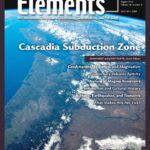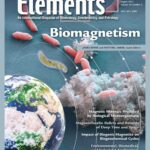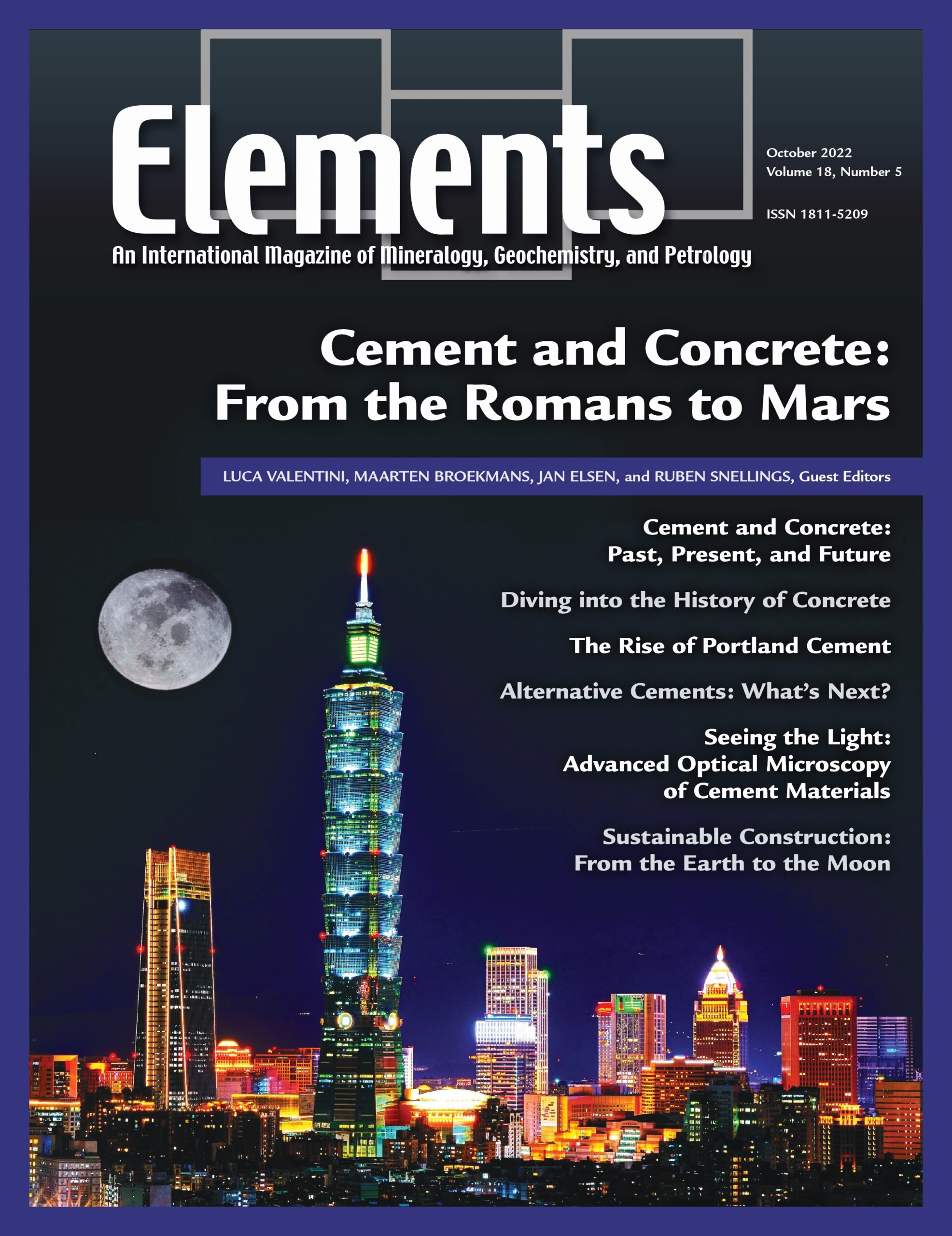
Cascadia Subduction Zone, August 2022, Vol. 18, No. 4
June 28, 2024
Biomagnetism, August 2023, Vol. 19, No. 4
June 28, 2024Cement And Concrete: From The Romans To Mars, October 2022, Vol. 18, No. 5
$20.00
Portland cement represents an essential commodity in a developing and quickly urbanizing world. However, the downside of its popularity is a massive ecological footprint, in terms of global warming potential and consumption of mineral and water resources.
Cement And Concrete: From The Romans To Mars
October 2022, Vol. 18, No. 5
Portland cement represents an essential commodity in a developing and quickly urbanizing world. However, the downside of its popularity is a massive ecological footprint, in terms of global warming potential and consumption of mineral and water resources. Therefore, the development of sustainable alternatives to ordinary Portland cement constitutes a fundamental technological and societal challenge. In this context, mineralogy and geochemistry play an important role in assessing primary and secondary resources for a new generation of cement and concrete that has a reduced ecological footprint, drawing from the knowledge of both ancient and modern binders. Mineralogical and geochemical tools are also essential to establishing a link between the basic physical and chemical processes that occur during the production, hardening, service life, and degradation of concrete.
Why You’ll Love Elements Magazine:
- Expert Contributors: Articles written by renowned researchers in the field of geoscience.
- Engaging Content: Join a community of readers who are passionate about Elements.
- Exceptional Quality: Each issue is printed on high-quality paper with stunning visuals and detailed illustrations that bring complex scientific concepts to life.
Order your copy of the October 2022 issue of Elements magazine today and explore cement and concrete: from the Romans to Mars.
Related products
-
Nanogeoscience, December 2008, Vol. 4, No. 6
$20.00At first glance, nano and Earth seem about as far apart as one can imagine. Nanogeoscience seems to be a word connecting opposites.
-
Fluids in Planetary Systems, January 2005, Vol. 1, No. 1
$20.00Water and other geofluids play an important role in the geochemical and rheological evolution of the Earth and other bodies in the solar system. These fluids are responsible for the formation of hydrothermal mineral deposits, affect eruption behavior in volcanic systems and the geophysical properties of the mantle, and significantly affect the way in which rocks deform and fracture.
-
Supervolcanoes, February 2008, Vol. 4, No. 1
$20.00Explosive super-eruptions from large volume, shallow magma systems lead to enormous and devastating pyroclastic flows, the formation of gigantic collapse calderas, and deposition of volcanic ash over continent-sized areas. Recognition that future eruptions from these “supervolcanoes” will undoubtedly have severe impacts on society—and perhaps on life itself—has led to recent public and media interest.




